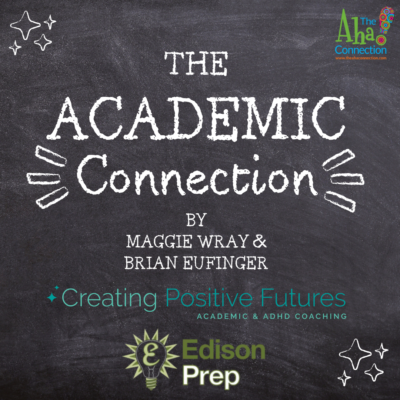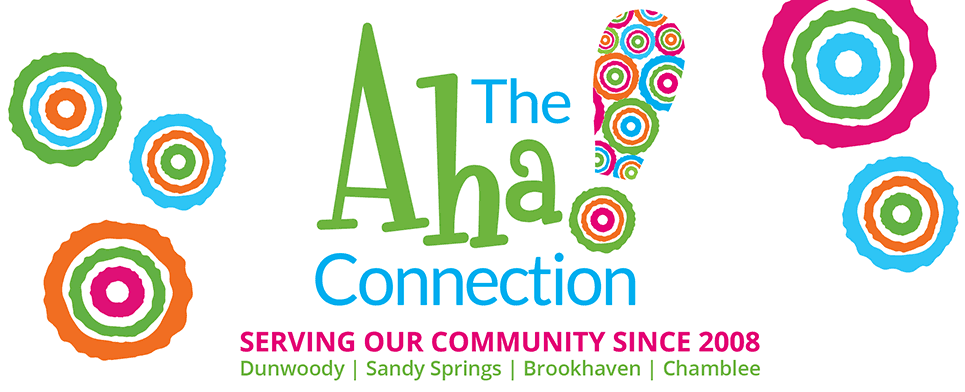 by Brian Eufinger of Edison Prep for The Aha! Connection
by Brian Eufinger of Edison Prep for The Aha! Connection
With summer in full swing, parent-to-parent conversations around the grill invariably involve their children’s upcoming college plans: “Where is Sarah going next fall? Has she decided on a major? She got how much in merit aid? I didn’t even know that was possible!”
This article addresses one simple truth: We are living in a golden age of merit aid for college. While the average tuition is higher now than it was 30 years ago, scholarship requirements are much more frequently quantifiable and transparent. Hundreds of colleges provide easily accessible, guaranteed information, meaning students have less guesswork to do.
1999 versus now:
I grew up without much money, and had marching orders from my parents to “find a way to pay for those fancy colleges you’re so enamored with. We don’t want to see you sign up for a zillion dollars in student loans.” But most colleges in 1999 did not publicize their merit aid grids, if they even had them at all. If you shared academic stats with a college and asked if you might qualify for scholarship dollars, they would just reply, “You never know…just apply!”
So, I hedged my bets—I spent too much time applying for scholarships for which there was a miniscule chance of winning, given the number of applicants. I had no other recourse when colleges had minimal transparency with potential merit aid.
I’m a hypocrite.
I have often joked with students that if I were ever the Secretary of Education, my first project would be to abolish the Common App: it causes teenagers immense stress. Students can apply to 20 schools with just a few clicks, leading to massive uncertainty, waitlist mania, and racked-up application fees. And while I am against students applying to so many schools, I’m a hypocrite: back in 1999, I applied to 19 colleges. I did so because we didn’t have the beautiful transparency around merit aid that many schools have today. I knew I would be accepted to most schools I applied to, but I didn’t expect to receive widely different merit aid amounts that ranged from $0 to full tuition at institutions that were ostensibly “peers.” It made zero sense.
Before we get to merit aid grids, a few quick truths:
-
The vast majority of the merit aid that your student will ever receive comes straight from the college itself. It is easier for colleges to lop off a portion of the sticker price (well into the five figures per year!) than for a student to cobble together scholarships from the Rotary and other organizations, most of which require lengthy essays and applications.
-
Higher grades and test scores are the two variables that most merit aid grids are based upon.
-
If you have stellar scores or a niche that makes it easier to compete (e.g. Eagle Scout-specific scholarships or Girl Scout Gold Award scholarships), those are likely still worthwhile to apply to due to how narrow the applicant pool is.
-
Aside from that, you would likely average more dollars earned per hour babysitting, mowing lawns, or the like! Some popular scholarships might get 1,000 applicants for just two winning spots of $500.
Merit Aid Grids and how they help bring some clarity to college costs
Merit aid grids are either one-dimensional or two dimensional tables or graphs, published by universities. They relate a student’s GPA, their SAT/ACT scores, and a promised scholarship, provided you meet the metrics. Hundreds of colleges publish and update their grids every year to entice applicants with the kind of discounted prices they can expect.
Here are some popular ones close to home:
Notice how at Auburn, the same GPA – 3.5 – is needed for all levels of merit aid, with ACT determining the entire merit aid award. A student with an ACT of 28.25 (one question below the cutoff for merit aid) could fix roughly 24 ACT questions they missed and get a 33, earning $60,000, or $2,500 per extra question correct.
Alabama:
One important note is that students do not have to have perfect scores or perfect grades to earn these scholarships. Let’s look at Mizzou as a case study!
Our examples focused on the Southeast, but the same applies to the rest of the US. Some universities don’t even have test score requirements, just a raw GPA: Arizona’s merit aid grid starts off with no score requirement and a 2.75 GPA!
And of course, Georgia’s most popular merit aid grid is the Zell Miller HOPE Scholarship, which has one simple row: get a 3.7 GPA and a 1200 SAT or 26 ACT for 100% tuition.
Our new merit aid tool—coming late this summer!
My wife Silvia and I are grateful for the scholarships that our alma mater Washington University in St. Louis offered us, and it’s time for us to pay it forward. We are working diligently with our summer intern to create a website directory of more than 100 merit aid grids: a living, breathing site where families can view, compare, and even contribute university statistics!
We have a goal launch date of August 1st (the day the Common App opens), and the URL is www.meritaidgrids.com/. The Aha! Connection will definitely publish a heads-up in the newsletter once it goes live!
Coming soon:
If you have any questions about how to help your student make the most of their time this summer, need to take free diagnostic mock SAT or ACT tests, or need tutoring help for the SAT/ACT, feel free to reach out anytime at 404-333-8573 or edison@edisonprep.com and we’ll be happy to help!
-Brian Eufinger
Co-founder, Edison Prep
P.S. One important note on income-based aid:
Many schools with decent endowments are now attempting to outdo each other by offering amazingly liberal aid policies for families under a certain threshold. For example, Vanderbilt covers full tuition for anyone with a household income under $150K. Others have lower bars: Colgate $80K, Rutgers $65K, U of Michigan $75K, Brown $125K.
The Academic Connection:
Brian is the co-founder of Edison Prep, a Sandy Springs-based college prep company that works with students who are preparing for the SAT, ACT, and other standardized tests such as AP History, and who are navigating the process of both applying to and affording college.
Maggie is a Dunwoody resident and the founder of Creating Positive Futures, an academic coaching company that helps middle, high school, and college students earn better grades with less stress by developing the organization, time management, mindset, study strategies, and executive functioning skills they need to reach their goals.
We’re excited to share some helpful ideas and information with Aha! Readers, and hope you enjoy this new feature! If you ever have any questions or need additional support, please feel free to reach out to us directly using the contact information below and we’ll be happy to help.

















